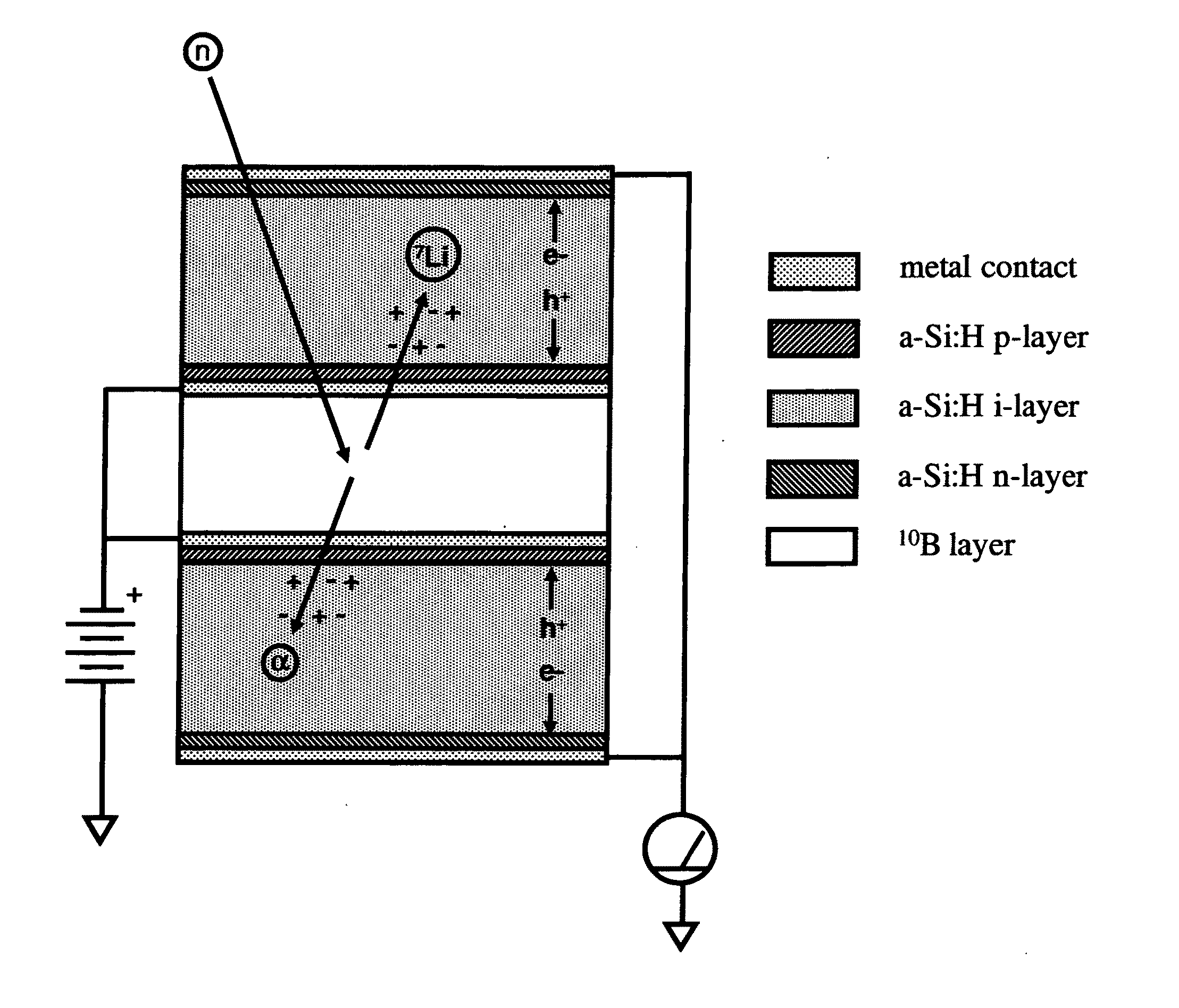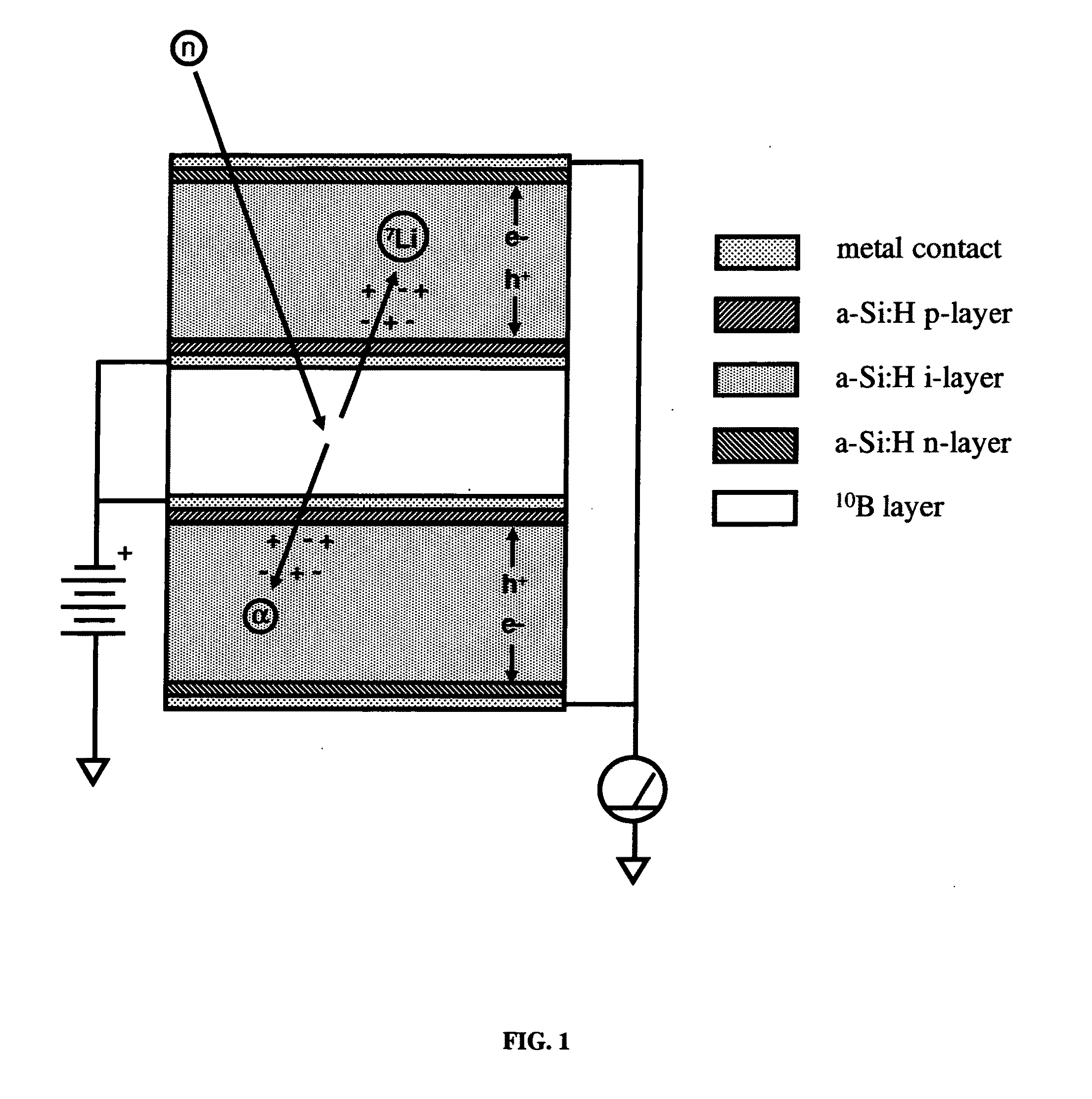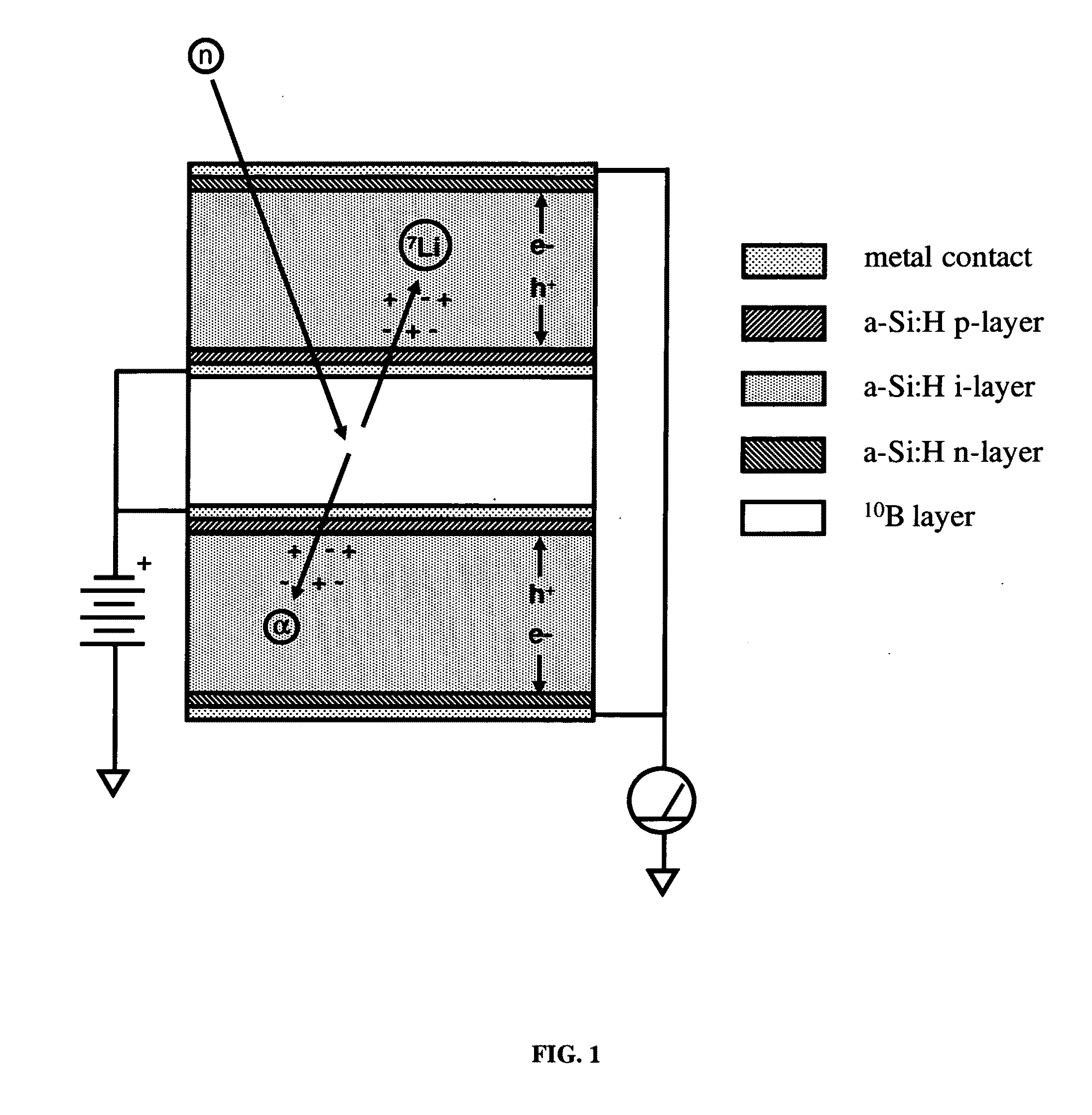Solid state neutron detector
a solid-state neutron and detector technology, applied in the field of neutron detectors, can solve the problems of low false-positive detection capability of neutrons, relatively poor gamma insensitivity, manufacturing and operation risks, etc., and achieve high neutron capture cross section, low cost, and high intrinsic efficiency
- Summary
- Abstract
- Description
- Claims
- Application Information
AI Technical Summary
Benefits of technology
Problems solved by technology
Method used
Image
Examples
first preferred embodiment
Five 10B Layer Neutron Detector
[0034]FIG. 5 shows a cross-sectional diagram of the preferred embodiment of the invention involving five 10B layers interleaved between six hydrogenated amorphous silicon (a-Si:H) PIN diodes. As a single neutron passes through the detector, it will have an eight percent probability of being absorbed in the first 10B layer, assuming a 1.6 micron thick layer of greater than 90% enriched 10B in the 10B layers. If the first 10B layer (N=1) does not absorb the neutron, then the other 10B layers (N=2, 3, 4, 5) will contribute to the total intrinsic efficiency PABS(N=5) according to the equation
[0035]PABS(N)=1−exp└−NPABS,SINGLELAYER┘
where PABS,SINGLELAYER=0.08 is the intrinsic efficiency for neutron detection in a single 10B layer device. FIG. 6 shows a graph of the intrinsic efficiency for detecting neutrons PABS (N) versus number of 10B layers N. FIG. 6 shows that the preferred embodiment has PABS(N=5)=34% intrinsic efficiency for detecting neutrons.
[0036]F...
PUM
 Login to View More
Login to View More Abstract
Description
Claims
Application Information
 Login to View More
Login to View More - R&D
- Intellectual Property
- Life Sciences
- Materials
- Tech Scout
- Unparalleled Data Quality
- Higher Quality Content
- 60% Fewer Hallucinations
Browse by: Latest US Patents, China's latest patents, Technical Efficacy Thesaurus, Application Domain, Technology Topic, Popular Technical Reports.
© 2025 PatSnap. All rights reserved.Legal|Privacy policy|Modern Slavery Act Transparency Statement|Sitemap|About US| Contact US: help@patsnap.com



